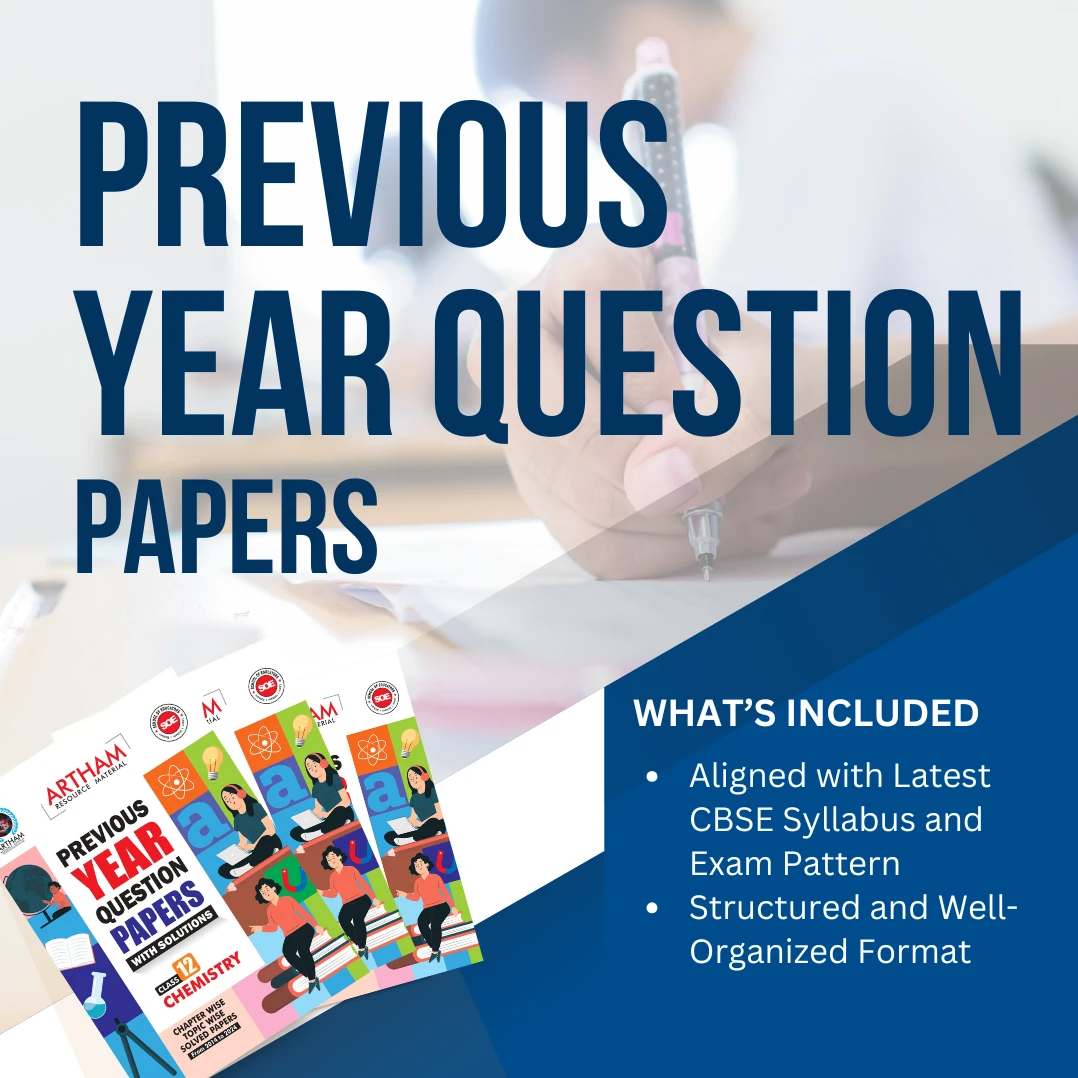Shop Left Sidebar
- CBSE
- Chapter Wise Topic Wise Notes
- Class 10
- Class 9
- Competency-Based Question Bank
- Competitive Exams & Aptitude Tests
- Comprehensive Viva Voice
- Courses
- CUET
- Daily Practice Paper (DPP)
- Diagnostic Assessment
- eBooks
- For New School
- Foundation and Olympiad Study Material
- Gift for Students
- Gift for Teachers
- Half Yearly Sample Question Paper with Solution
- Holiday Homework
- Illustrative Charts
- Journal
- Kindergarten
- Lesson Plan
- Life Skills
- Line by Line Questions
- Mind Maps
- Must Buy
- NCERT Exemplar Solutions
- NCERT Solutions
- Notes
- POWERPOINT PRESENTATIONS
- Pre Launch Stage
- Premium WhatsApp Group
- Previous Year Question Papers
- Previous Year Question Papers with Solutions
- Print version of SOP
- Sample Paper
- Sample Paper with Solutions
- Self Development
- Split -up Syllabus
- Sports and Physical Education
- Standard Operating Manuals
- Study Materials for Students
- Teachers Manual with Lesson Plans
Best seller
-
-100%
₹ 50.00Original price was: ₹ 50.00.₹ 0.00Current price is: ₹ 0.00. -
-100%
₹ 50.00Original price was: ₹ 50.00.₹ 0.00Current price is: ₹ 0.00. -
-100%
₹ 50.00Original price was: ₹ 50.00.₹ 0.00Current price is: ₹ 0.00. -
-100%
₹ 299.00Original price was: ₹ 299.00.₹ 0.00Current price is: ₹ 0.00.
- CBSE
- Chapter Wise Topic Wise Notes
- Class 10
- Class 9
- Competency-Based Question Bank
- Competitive Exams & Aptitude Tests
- Comprehensive Viva Voice
- Courses
- CUET
- Daily Practice Paper (DPP)
- Diagnostic Assessment
- eBooks
- For New School
- Foundation and Olympiad Study Material
- Gift for Students
- Gift for Teachers
- Half Yearly Sample Question Paper with Solution
- Holiday Homework
- Illustrative Charts
- Journal
- Kindergarten
- Lesson Plan
- Life Skills
- Line by Line Questions
- Mind Maps
- Must Buy
- NCERT Exemplar Solutions
- NCERT Solutions
- Notes
- POWERPOINT PRESENTATIONS
- Pre Launch Stage
- Premium WhatsApp Group
- Previous Year Question Papers
- Previous Year Question Papers with Solutions
- Print version of SOP
- Sample Paper
- Sample Paper with Solutions
- Self Development
- Split -up Syllabus
- Sports and Physical Education
- Standard Operating Manuals
- Study Materials for Students
- Teachers Manual with Lesson Plans
Showing 17–32 of 174 results
-
-50%
Chapter Wise Topic Wise Notes Class 12 हिन्दी व्याकरण Topic-5 छन्द
₹ 50.00Original price was: ₹ 50.00.₹ 25.00Current price is: ₹ 25.00.“Chapter Wise Topic Wise Notes Class 12 हिन्दी व्याकरण Topic-5 छन्द” is a comprehensive study resource designed to help students master the intricacies of Hindi grammar, specifically focusing on the poetic meters or “छन्द” (Chhand) in Class 12. This topic delves into various poetic forms and rhythms essential for understanding and analyzing classical Hindi poetry. The notes offer clear explanations of different types of Chhand, their structural patterns, and examples to illustrate their application.
-
-50%
Chapter Wise Topic Wise Notes Class 12 हिन्दी व्याकरण Topic-4 क्रिया
₹ 50.00Original price was: ₹ 50.00.₹ 25.00Current price is: ₹ 25.00.The “Chapter Wise Topic Wise Notes Class 12 हिन्दी व्याकरण Topic-4 क्रिया” provides a comprehensive understanding of the concept of क्रिया (verbs) in Hindi grammar. This topic explores various types of क्रिया, their classifications, and their usage in different contexts. The notes include detailed explanations of क्रिया’s role in sentence structure, verb forms, and their agreement with subjects.
-
-50%
Chapter Wise Topic Wise Notes Class 12 हिन्दी व्याकरण Topic-3 उपसर्ग
₹ 50.00Original price was: ₹ 50.00.₹ 25.00Current price is: ₹ 25.00.The “Chapter Wise Topic Wise Notes Class 12 हिन्दी व्याकरण Topic-3 उपसर्ग” is a comprehensive guide designed to help students understand and master the concept of उपसर्ग (prefixes) in Hindi grammar. This chapter delves into the various उपसर्ग used in the Hindi language, their meanings, and their application in forming new words and altering the meanings of root words. The notes provide clear explanations, examples, and exercises to ensure a thorough grasp of how prefixes function within different contexts.
-
-50%
Chapter Wise Topic Wise Notes Class 12 हिन्दी व्याकरण Topic-2 अलंकार
₹ 50.00Original price was: ₹ 50.00.₹ 25.00Current price is: ₹ 25.00.This set of notes covers Topic-2 “अलंकार” from Class 12 Hindi Grammar (व्याकरण). The notes provide a comprehensive explanation of “अलंकार,” a crucial concept in Hindi literature that enhances the beauty and expressiveness of language. The topic delves into the various types of अलंकार (ornamentation), including अनुप्रास (alliteration), यमक (repetition), और उत्प्रेक्ष (metaphor), and how they contribute to the aesthetic quality of poetry and prose.
-
-50%
Chapter Wise Topic Wise Notes Class 12 हिन्दी व्याकरण Topic-1 अनुच्छेद
₹ 50.00Original price was: ₹ 50.00.₹ 25.00Current price is: ₹ 25.00.The “Chapter Wise Topic Wise Notes Class 12 हिन्दी व्याकरण Topic-1 अनुच्छेद” is a comprehensive resource designed to aid students in mastering the intricacies of Hindi grammar, specifically focusing on “अनुच्छेद” (Paragraph Writing). This chapter introduces the fundamental principles of composing well-structured paragraphs, emphasizing coherence, unity, and clarity. It provides detailed explanations, illustrative examples, and practice exercises to help students develop their writing skills.
-
-50%
Chapter Wise Topic Wise Notes Class 12 हिन्दी (वितान) Chapter 3 अतीत में दबे पाँव
₹ 50.00Original price was: ₹ 50.00.₹ 25.00Current price is: ₹ 25.00.Chapter 3, “अतीत में दबे पाँव,” from Class 12 Hindi (वितान) delves into the themes of historical memory and the silent voices from the past. This chapter provides an insightful examination of how the past influences the present and explores the notion of marginalized histories. The notes for this chapter include a comprehensive breakdown of key themes, character analyses, and critical discussions to help students grasp the underlying messages.
-
-50%
Chapter Wise Topic Wise Notes Class 12 हिन्दी (वितान) Chapter 2 जूझ
₹ 50.00Original price was: ₹ 50.00.₹ 25.00Current price is: ₹ 25.00.“Chapter Wise Topic Wise Notes Class 12 हिन्दी (वितान) Chapter 2 ‘जूझ'” provides a comprehensive overview of the second chapter from the Class 12 Hindi textbook, ‘वितान’. This chapter delves into the struggles and resilience depicted in literary texts, focusing on themes of perseverance, conflict, and personal growth. The notes are meticulously organized by topic, ensuring students grasp key concepts, character analysis, and thematic elements crucial for understanding and interpreting the text.
-
-50%
Chapter Wise Topic Wise Notes Class 12 हिन्दी (वितान) Chapter 1 सिल्वर वैडिंग
₹ 50.00Original price was: ₹ 50.00.₹ 25.00Current price is: ₹ 25.00.Chapter 1 of Class 12 Hindi Vitan, titled “सिल्वर वैडिंग,” offers an insightful exploration of themes and characters in the context of a silver wedding celebration. The chapter delves into the intricacies of human relationships and societal norms as seen through the lens of a long-lasting marriage. It highlights the emotions, cultural practices, and personal reflections that surround such significant milestones.
-
-50%
Chapter Wise Topic Wise Notes Class 12 हिन्दी (आरोह-गद्य भाग) Chapter 15 श्रम विभाजन और जातिप्रथा
₹ 50.00Original price was: ₹ 50.00.₹ 25.00Current price is: ₹ 25.00.Chapter 15, “श्रम विभाजन और जातिप्रथा,” in the Class 12 हिन्दी (आरोह-गद्य भाग) textbook explores the complex relationship between labor division and the caste system in Indian society. This chapter delves into how labor division historically structured social roles and how the caste system institutionalized these divisions, affecting social mobility and economic disparities.
-
-50%
Chapter Wise Topic Wise Notes Class 12 हिन्दी (आरोह-गद्य भाग) Chapter 14 शिरीष के फूल
₹ 50.00Original price was: ₹ 50.00.₹ 25.00Current price is: ₹ 25.00.Chapter 14 of Class 12 हिन्दी (आरोह-गद्य भाग), titled “शिरीष के फूल,” by renowned author और कवि, explores the profound themes of human emotions and societal norms through a poignant narrative. The story, set against a rural backdrop, delves into the symbolism of the shirish flowers and their representation of the transient nature of human life and relationships.
-
-50%
Chapter Wise Topic Wise Notes Class 12 हिन्दी (आरोह-गद्य भाग) Chapter 13 पहलवान की ढोलक
₹ 50.00Original price was: ₹ 50.00.₹ 25.00Current price is: ₹ 25.00.Chapter 13 of the Class 12 Hindi book Aroh-Gadya Bhag is titled “पहलवान की ढोलक.” This chapter presents a rich narrative that delves into the life and struggles of a traditional wrestler. The story explores themes of honor, tradition, and the transformative power of music. The central focus is on the wrestler’s relationship with his drum (ढोलक), which symbolizes his connection to his cultural roots and personal identity.
-
-50%
Chapter Wise Topic Wise Notes Class 12 हिन्दी (आरोह-गद्य भाग) Chapter 12 काले मेघा पानी दे
₹ 50.00Original price was: ₹ 50.00.₹ 25.00Current price is: ₹ 25.00.Chapter 12, “काले मेघा पानी दे,” from the Class 12 Hindi textbook आरोह-गद्य भाग, is a poignant and evocative poem by the renowned poet, यशपाल. The chapter beautifully captures the essence of nature’s plea for rain. The poet uses the imagery of dark clouds, personified as a beseeching figure, to symbolize the longing for rain. The poem reflects on themes of hope, renewal, and the symbiotic relationship between nature and humanity.
-
-50%
Chapter Wise Topic Wise Notes Class 12 हिन्दी (आरोह-गद्य भाग) Chapter 11 बाज़ार दर्शन
₹ 50.00Original price was: ₹ 50.00.₹ 25.00Current price is: ₹ 25.00.“Chapter Wise Topic Wise Notes Class 12 हिन्दी (आरोह-गद्य भाग) Chapter 11 बाज़ार दर्शन” provides an in-depth analysis of the eleventh chapter of the Class 12 Hindi textbook, “आरोह-गद्य भाग”. This chapter, titled “बाज़ार दर्शन”, delves into the concept of the marketplace as a reflection of social and economic dynamics. It explores the significance of markets in shaping cultural and societal norms, emphasizing the interplay between commerce and community life.
-
-50%
Chapter Wise Topic Wise Notes Class 12 हिन्दी (आरोह-गद्य भाग) Chapter 10 भक्तिन
₹ 50.00Original price was: ₹ 50.00.₹ 25.00Current price is: ₹ 25.00.Chapter 10 “भक्तिन” in the Class 12 Hindi textbook “आरोह-गद्य भाग” focuses on the life and contributions of prominent female saints and their devotional poetry. This chapter highlights the role of women in the Bhakti movement, emphasizing their spiritual fervor and literary contributions. The notes cover the historical context of the Bhakti movement, the socio-religious impact of female saints, and the thematic essence of their poetry.
-
-50%
Chapter Wise Topic Wise Notes Class 12 हिन्दी (आरोह-काव्य भाग) Chapter 9 छोटा मेरा खेत, बगुलों के पंख
₹ 50.00Original price was: ₹ 50.00.₹ 25.00Current price is: ₹ 25.00.Chapter 9 of the Class 12 Hindi textbook “आरोह-काव्य भाग” includes two significant poems: “छोटा मेरा खेत” and “बगुलों के पंख.” The poem “छोटा मेरा खेत” by renowned poet भल्ला (Bhalla) reflects on the simplicity and contentment found in a small field, emphasizing the beauty and satisfaction of leading a modest life. Through vivid imagery and emotional depth, the poem conveys a sense of peace and belonging.
-
-50%
Chapter Wise Topic Wise Notes Class 12 हिन्दी (आरोह-काव्य भाग) Chapter 8 रुबाइयाँ
₹ 50.00Original price was: ₹ 50.00.₹ 25.00Current price is: ₹ 25.00.Chapter 8: रुबाइयाँ of the Class 12 हिन्दी (आरोह-काव्य भाग) provides an insightful exploration of rubaiyat, a form of Persian poetry known for its quatrain structure and philosophical depth. This chapter delves into the essence of रुबाइयाँ, highlighting the stylistic and thematic elements characteristic of this poetic form. Students will engage with prominent rubaiyat that reflect profound observations on life, spirituality, and human experiences.
Teaching is one of the hardest and most important jobs in the world. We provide the support that teachers need to transform their subjects into terms that their students will understand.
- Nageen International
- B-162, 4th Floor, DDA Shed, Okhla Industrial Area Phase 1 New Delhi-110020 (India)
- WhatsApp us at +91-95208-11111
- Email: info@educatorsresource.in
- (Monday to Saturday) WhatsApp 24*7
2025 Educator Resources. All Rights Reserved.




